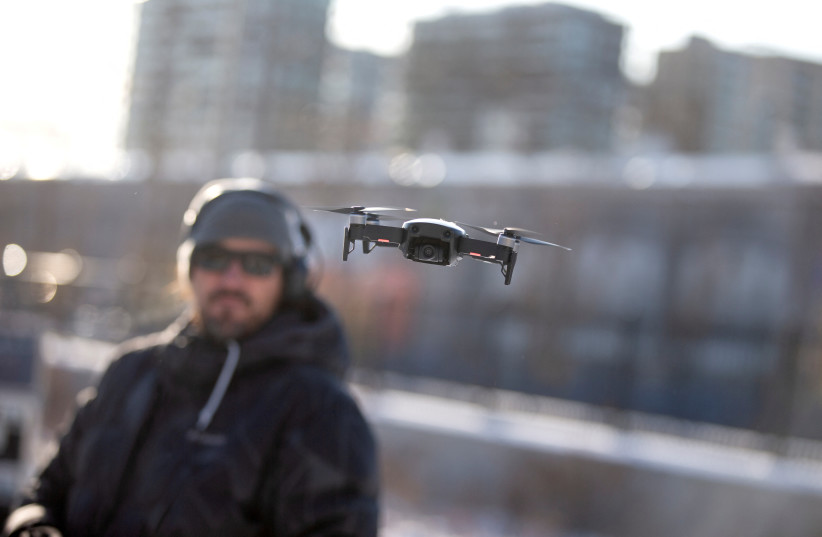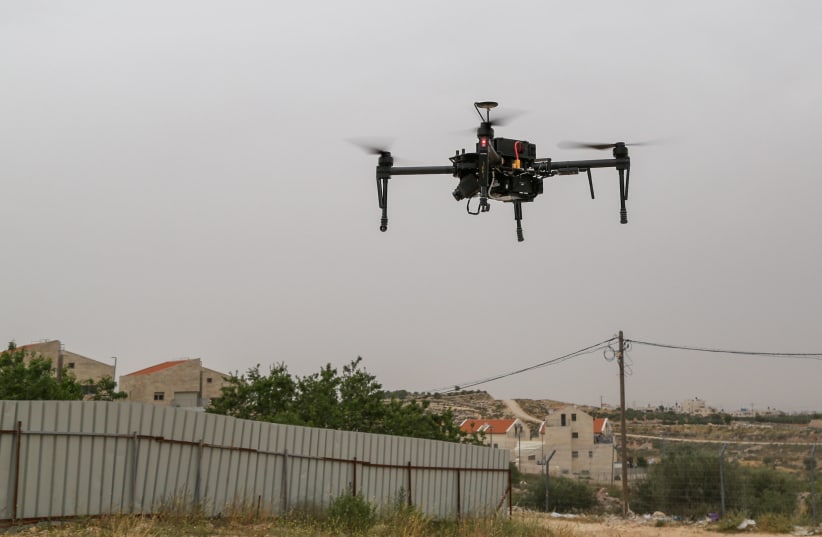Israel revealed this week that it uses armed drones. It has used them for many years but the details about the operations were ostensibly a secret and subject to IDF military censorship. That meant reports about Israeli armed drones were often published abroad, but within Israel there was very little public discussion of the issue.
“It was found that there is nothing preventing publishing the IDF's use of attack drones as part of its operational activities.”
IDF Military Censor
“It was found that there is nothing preventing publishing the IDF's use of attack drones as part of its operational activities,” the censor said in a message on Wednesday evening.
So what changed? The world of armed drones and the countries that use them has changed rapidly in the last half-decade. Turkey is now exporting them and often brags about their use in places like Ukraine. China sells armed drones. The US, which has been using them for two decades, is also looking to increase potential sales and clients.
With major wars like the Ukraine conflict now under way, everyone sees armed drones as part of the future of warfare. For instance, the White House has accused Russia of seeking out Iranian drone technology. Turkish drones are bombing Iraq and Syria. China’s drones are in Libya. Azerbaijan, which is also a client of Israeli loitering munition technology, according to foreign reports, uses drones and is proud of their abilities.


Why are Israeli drones controversial?
All of this points to a double standard regarding Israel. It was considered “controversial” that the Jewish state might use armed drones, when basically every other country in the Middle East was using them. Why was it controversial for Israel to sell armed drones – or drones that could be armed later by the customer – but Turkey, a member of NATO, could openly brag about its targeted drone strikes? Why was it controversial for Jerusalem to use drones in Gaza, but when Ankara carried out targeted assassinations in Iraq and Syria, the UN and human rights groups were silent?
PART OF the story is an accident of history. Israel was a pioneer in drones. In the 1970s, when Israel was still recovering from its losses in the 1973 Yom Kippur War, it became clear that risking Israeli pilots against Syrian or Egyptian air defenses was not a prospect that the military wanted to confront again. How could Israel monitor where mobile Surface-to-Air Missile (SAM) batteries might be deployed?
An answer came in the form of using remote piloted vehicles (RPVs), which were later known as drones or Unmanned Aerial Systems (UAVs). Initially, these vehicles were simple and had been used by the US in the past. But these machines lacked many of the technologies Israel needed. Some of them were just flying target drones, used to be sacrificed in drills. Israel, and especially Israel Aerospace Industries, pioneered the use of drones. But they were used for surveillance, to bring back real-time intelligence on Syrian air defenses in places like Lebanon. By the 1980s, Israel had made peace with Egypt and the air defense threat was changing.
The US, impressed with Israel’s early drone abilities, acquired the technology. An Israeli inventor who had moved to the States was behind the drone that eventually became the US Predator. By the late 1990s, Washington was considering how to arm the Predator and whether it could be used against Al Qaeda.
An article at the Bard College Center for the Study of the Drone notes that Israel also pioneered what are called “loitering munitions” or kamikaze drones. “Early loitering munitions like the Israel Aerospace Industries Harpy, which was unveiled in the early 1990s, were intended to be used against radar installations or mobile missile launchers,” it said.
“Today, many loitering munitions are marketed for infantry use because they offer ground forces greater precision than, for example, a mortar. Unlike other types of drones of equivalent size and weight, a loitering munition is not meant to be recovered after the mission is over. Once armed and airborne, loitering munitions—which are also known as ‘suicide drones’—are meant to detonate on impact.”
THE NUMBER of countries using drones in their militaries mushroomed in the early 2000s. From an estimated 60 countries using them in 2010, around 95 countries were said to be using them by 2019, according to the Bard College Drone Databook. The number of countries arming their drones was also increasing.
America was the real pioneer in armed drones and Israel a pioneer in loitering munitions. The two systems are different because loitering munitions destroy themselves on impact, whereas a large armed drone has missiles attached to it, like a warplane. The concept is that a large drone, like the Predator, can return to base. Israel has drones like the Predator or the Reaper. Elbit Systems makes the Hermes line and IAI makes the Eitan and Heron. Israel makes a plethora of loitering munitions as well, including Rafael’s Firefly, and the IAI Harop, Harpy and others.
What was an issue for Israel in the last decade regarding drones, drone sales and admitting the use of armed drones was the fact that the Jewish state is always under a spotlight. Operations in Gaza are always going to get more attention from the UN and human rights groups than other military activities around the world.
Israel was also using the guidelines of the Missile Technology Control Regime (MTCR), a multinational and informal political understanding between 35 countries aimed at limiting the proliferation of missiles and missile technology. This ostensibly also limited sales of armed drones. Ambiguity was therefore helpful for Israel.
Drones in the Obama and Trump eras
It’s hard to remember now, but in the period of Obama’s presidency, there was an obsessive focus on drones in Western media. The US was accused of using drones across a swath of countries – and some of the strikes resulted in civilian casualties. Major media outlets, research groups, think tanks and academics – and even Hollywood – took time dissecting these strikes. The US was constantly slammed for not reporting on civilian deaths or allowing “killer robots” to massacre civilians. Focus was put on the “kill chain” and the “man in the loop,” examining how America chose what targets to kill and what kind of strikes to make.
BY THE time the Trump presidency was giving way to Biden, things had changed. Turkey was selling drones to Ukraine, Azerbaijan, Ethiopia and other countries. Iran was trafficking drones all over the Middle East and also transferring them to Ethiopia, Venezuela and other states. The UAE and Saudi Arabia were using drones. China was seeking to overtake the US and Israel in drone sales. Suddenly, every country seemed to be rushing to acquire armed drones.
This made Israel’s policy of ambiguity out of date. Why should the US, Turkey, China and Iran brag about armed drones while Israel had to pretend it was only selling surveillance drones or “loitering munitions”?
While armed drones are still controversial and there is a need to focus on human rights abuses involving them, their use is not as controversial as it was a decade ago. Armed drones are not more likely to be used to bomb civilians than manned aircraft. In fact, there is no evidence that aerial warfare was less deadly before drones came on the scene. Most drones can’t carry very many munitions so they are suited for precision strikes, not carpet bombing. That means that drone use in warfare is not yet a huge force multiplier in terms of aerial bombing.
Drone swarms and the use of artificial intelligence to identify enemies and reduce the time it takes to neutralize targets – the so-called sensor-to-shooter loop – is what matters today. Israel can now say that it is part of this world of armed drones, and less ambiguity will possibly improve Israel’s drones, not reduce their effectiveness.
